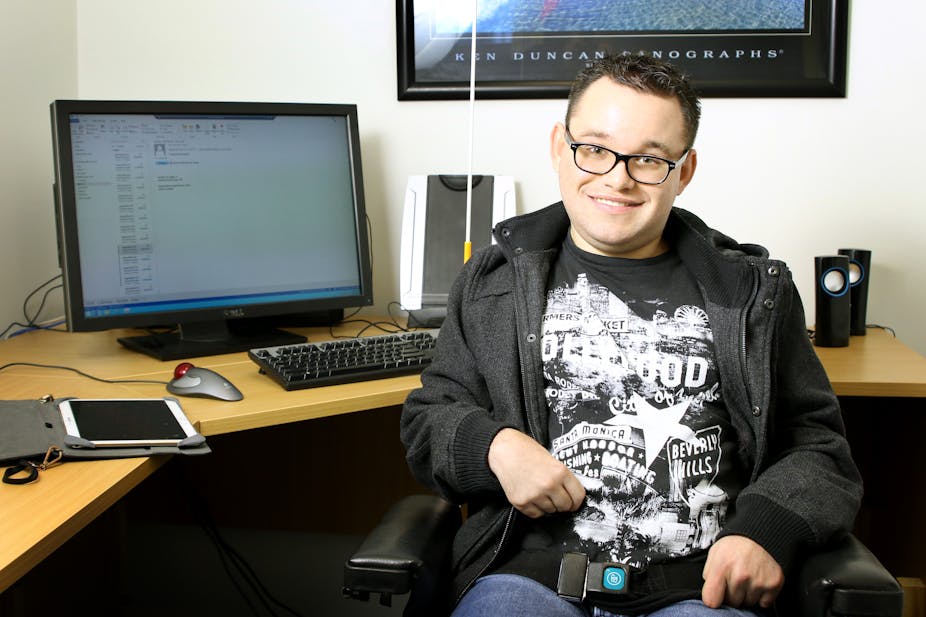The National Disability Insurance Scheme (Specialist Disability Accommodation) Rules were tabled in federal parliament in mid-March. The new rules offer the possibility of an inclusive Australian society that enables those people with the highest disability-related support needs to have equal access to mainstream services including housing.
The rules and explanatory statement detail the National Disability Insurance Agency’s proposed approach to specialist accommodation. The aim is to offer effective and efficient support for the 6% of NDIS participants identified with the most complex needs.
An estimated additional 127,000 NDIS participants will have an unmet need for affordable housing. This is seen as the responsibility of the mainstream housing system.
NDIS participants who are deemed eligible for Specialist Disability Accommodation now have an opportunity to look beyond traditional disability accommodation. Jono Bredin, a co-author of this article, says:
It’s only been 12 months since I took the huge step of moving from living with my parents to living in my own smart technology-enabled unit, co-located with five other units for people with disability and a hub of 24-hour shared support. I am so happy with where I live now.
I have gained so much confidence and motivation since I moved out of home. I used to live to go out to my work; now I have to work to live. I have started to go out more in the community on my own, trying out new clubs and pubs, paying for my own drinks and meeting new people.
The location of my home – close to accessible shops and transport, my work and family and friends – allows me to do the things I want when I want, but also gives me privacy and flexible, on-call support. But people in my age group are very mobile, most often moving because they have purchased a home, moved in with a partner, or wanted a bigger or better home. For me, these rules provide a next step in my thinking of a future housing career.
Opening up the housing options
The rules build on an SDA pricing and payments framework aimed at stimulating innovative, market-driven responses. This enables NDIS participants to consider a range of possible housing solutions and pathways. These might include a move towards home ownership, shared equity, or pooling resources to rent with friends.
Where SDA is approved as a “reasonable and necessary” support in an individual’s plan, the rules allow NDIS participants to consider registering as their own housing provider. This means they can secure a property that meets their needs and receive SDA payments that may help to service a loan.
This is a monumental shift for people with disability. Traditionally, they have been offered a restricted range of supported housing options beyond living with ageing parents, such as block-funded group homes or inappropriate placement in aged care.
Under the rules, the NDIS participant, as an SDA provider, can live with a partner and/or children and still receive SDA payments for their component of housing. However, if the participant chooses to live with their parents, he/she will not be eligible for SDA payments.
Importantly, the SDA benchmark prices include minimum standards for new accommodation. The rules state that the provision of home modifications and assistive technologies is the responsibility of the SDA provider.
Thus, if a person wants to be their own SDA provider, they must factor the (often considerable) cost of providing specific accessibility features and integrated equipment to the required standards, as well as changes that may be needed over time.
Building in comprehensive support
For any person, moving house or running a home (particularly for the first time) takes good planning, a time investment and skill development. For a person with disability, there are additional considerations for accommodation transitions.
Pleasingly, the SDA rules also point to work required beyond securing housing to ensure NDIS participants can participate in home and community life with the greatest possible choice and independence.
The rules note that suitable supports and pathways (as an alternative or in addition to SDA) may include capacity-building supports, assistance with daily living, home modifications, assistive technologies, or life transition planning.
This includes mentoring and peer support, focusing on individual skill development for the person with disability and their family. For many, the input of an experienced planner or support co-ordinator may be needed.
All these aspects need to be closely considered in the NDIS planning phase. Jono observes:
When I first moved out from Mum and Dad, I had never made my own breakfast. Living on my own, I wanted to make sure I developed the skills to do as much as I could myself. I worked with occupational therapy students to plan out my kitchen set-up and think about the best equipment, so I can reach my crockery, microwave and food in my fridge and pantry to make breakfast each day.
I also knew that I would need to replace some of the support Mum and Dad provided me with other supports, like assistive technologies (hoist, electric bed and mobile shower chair), home automation and communication technologies, and paid supports. I can now control my environment myself using my Samsung tablet, and receive on-call staff support without having someone in my home at all times.
The SDA rules highlight the monumental disability reform underway in Australia with the introduction of the NDIS. They also mark the need to ensure people with disability have the knowledge, planning input, skills and support co-ordination to make use of these rules and build housing pathways and choices comparable to those of other Australians.
Jono Bredin (founder of Calling the Brain’s Bluff) is a co-author of this article.

